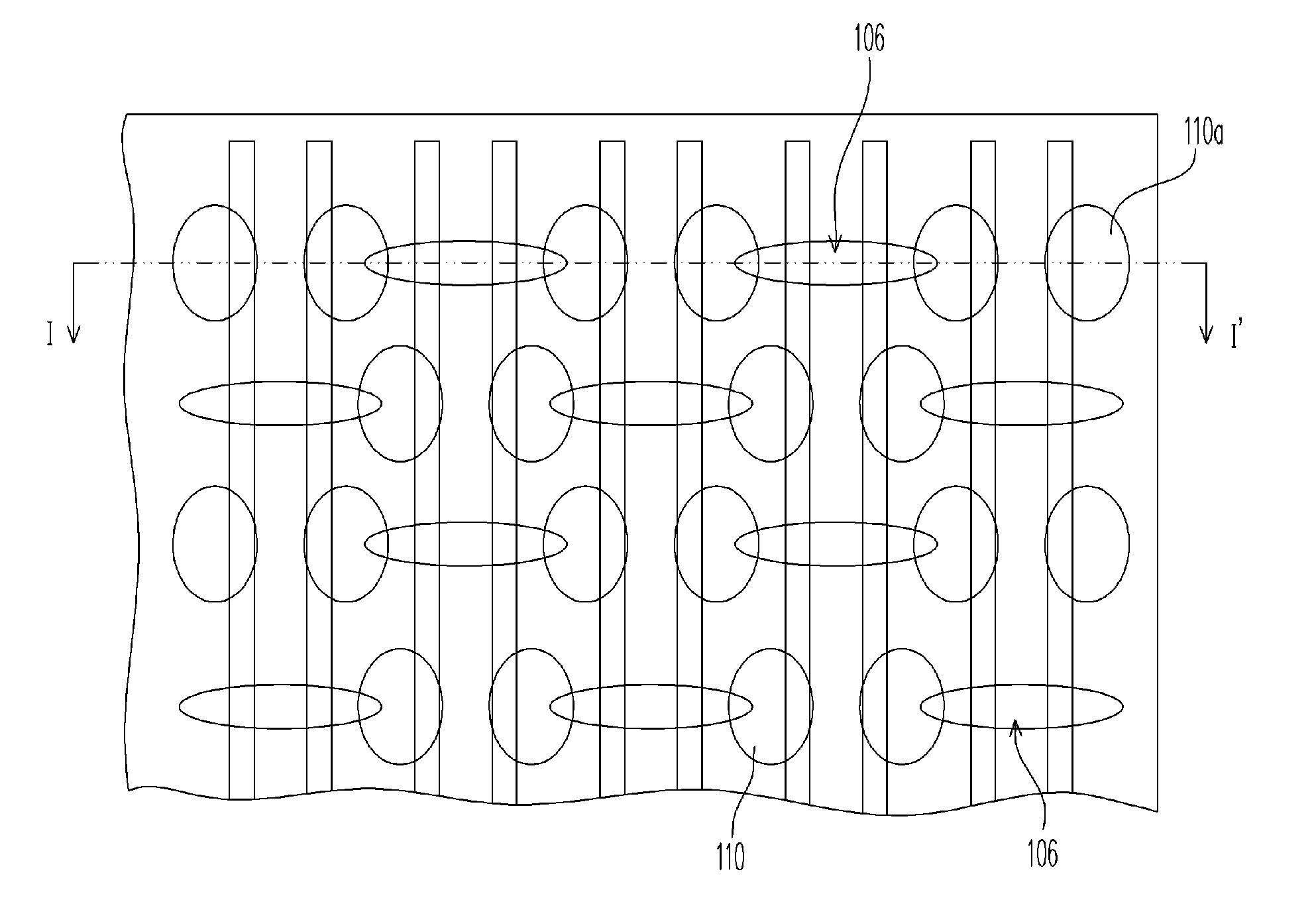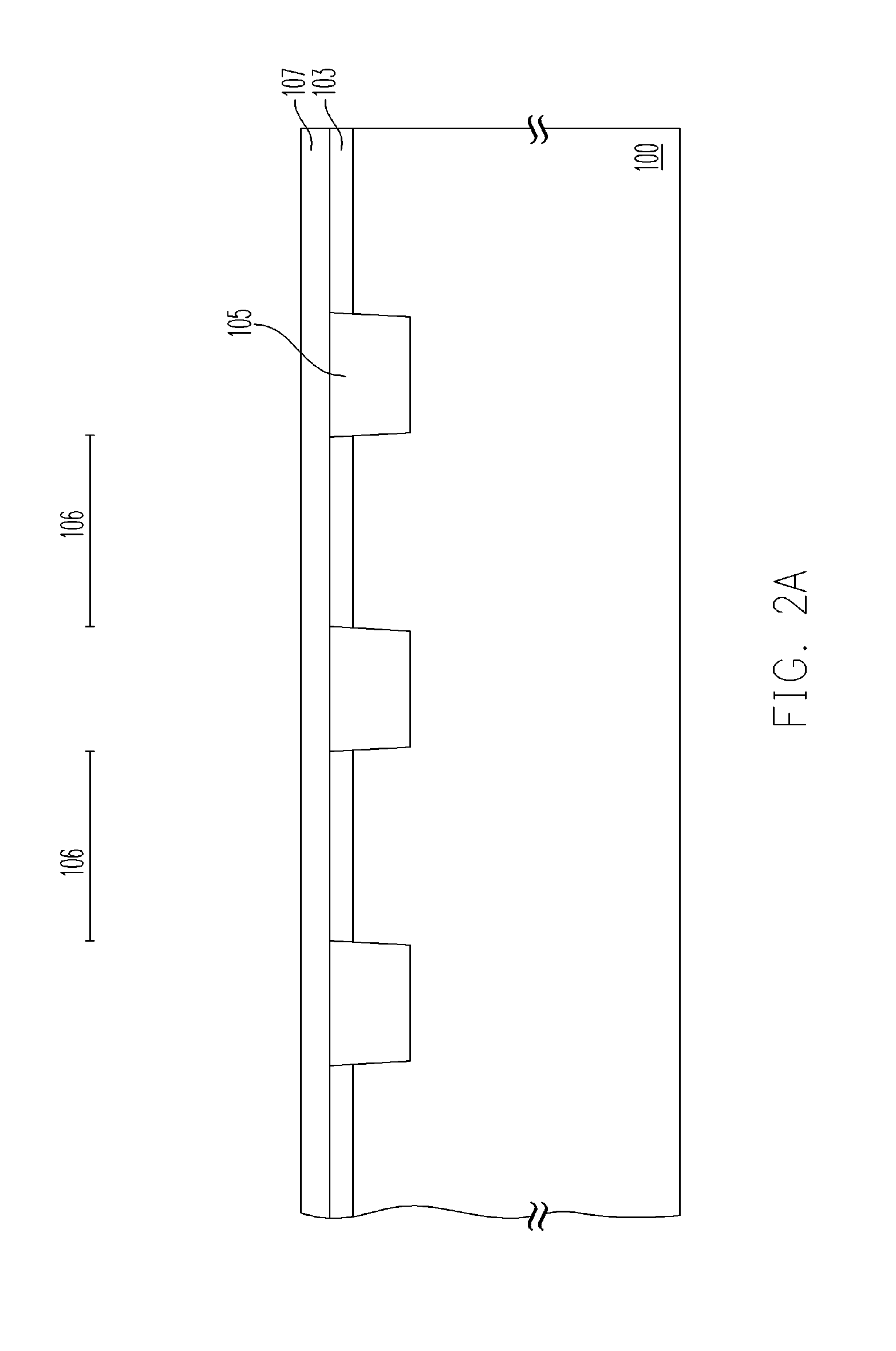Pick-up structure for dram capacitors and dram process
a technology of dram cells and pick-up structures, applied in the field of dram process, can solve problems such as limiting the integration degree, and achieve the effect of simplifying the dram process and increasing the integration degree of the dram
- Summary
- Abstract
- Description
- Claims
- Application Information
AI Technical Summary
Benefits of technology
Problems solved by technology
Method used
Image
Examples
Embodiment Construction
[0032]FIG. 1 illustrates a top view of a DRAM layout according to an embodiment of this invention. FIGS. 2A-2E illustrate a DRAM process according to a preferred embodiment of this invention.
[0033]Referring to FIGS. 1 and 2A, a substrate 100 like a silicon substrate is provided, and then a hard mask layer 103 is formed on the substrate 100. The hard mask layer 130 may include silicon nitride (SiN) and may be formed through CVD. An isolation structure 105 defining active areas 106 is then formed in the hard mask layer 103 and the substrate 100, possibly being a shallow trench isolation (STI) structure and possibly including silicon oxide. Before the hard mask layer 103 is formed, a pad layer (not shown) may be formed on the substrate 100. The process for forming the pad layer to the isolation structure 105 can be any suitable process having been applied the prior art.
[0034]Optionally, another hard mask layer 107 is further formed on the substrate 100 if required, possibly including S...
PUM
 Login to View More
Login to View More Abstract
Description
Claims
Application Information
 Login to View More
Login to View More - R&D
- Intellectual Property
- Life Sciences
- Materials
- Tech Scout
- Unparalleled Data Quality
- Higher Quality Content
- 60% Fewer Hallucinations
Browse by: Latest US Patents, China's latest patents, Technical Efficacy Thesaurus, Application Domain, Technology Topic, Popular Technical Reports.
© 2025 PatSnap. All rights reserved.Legal|Privacy policy|Modern Slavery Act Transparency Statement|Sitemap|About US| Contact US: help@patsnap.com



